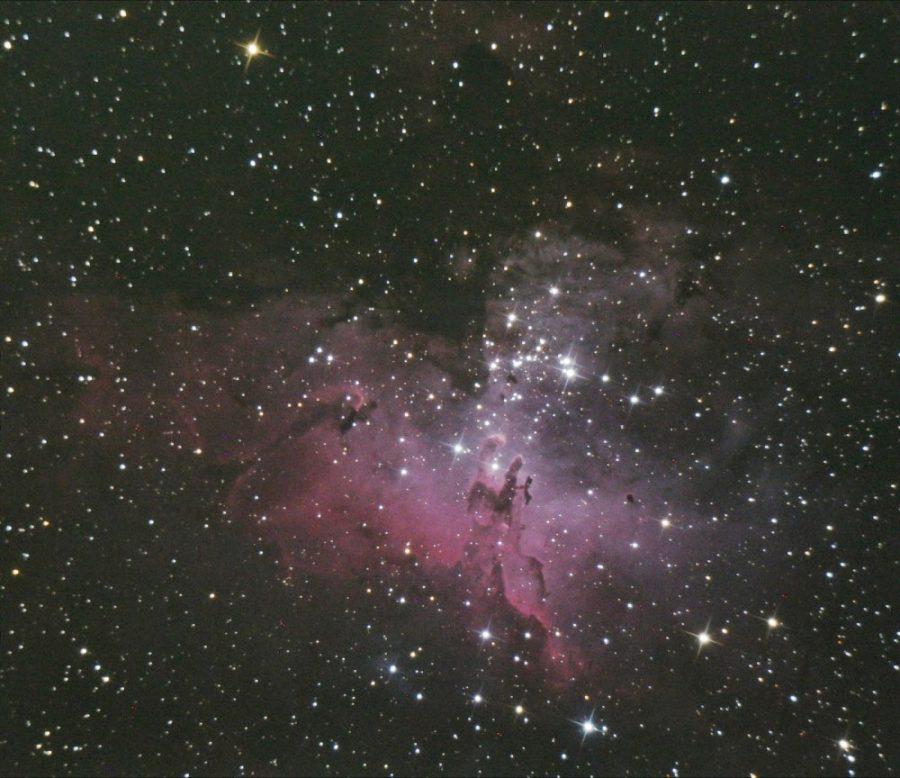As the school year winds down, let’s commemorate some of the greatest moments in science to which The Daily Wildcat has borne witness the past two semesters.
400 parts per million: We’ve reached a climate change ‘tipping point’
In September 2016, research showed that for the first time since record keeping began, the amount of carbon dioxide in the Earth’s atmosphere rose above 400 parts per million.

The earth has reached these levels before, but hasn’t seen anywhere close to such a high percentage for a few thousand years. UA researchers were quick to comment.
The Earth has natural climate variability and the amount of greenhouse gasses in the atmosphere at any one moment tend to vary over long stretches of time. However, in the past decade multiple climate change researchers have stated that the so called “tipping point” of climate change, crossing the event horizon, per se, would occur around 400 parts per million, although the number was considered more symbolic than anything else.
“We’re only now feeling the effects from emissions from decades ago,” said Ben Champion, director of the UA Office of Sustainability. “We’ve got to bring it back down.”
UA scientists discover water on metal asteroid
A group of UA scientists from the Lunar and Planetary Laboratory (LPL) revealed that they have discovered water on an asteroid dubbed Psyche.
The asteroid is roughly 300 km across and is composed mostly of nickel and iron. Psyche is thought perhaps to originate from the core of an ancient protoplanet.
Scientists believe that asteroids such as Psyche are the result of large scale collisions that happened early in the formation of the solar system.
The asteroid was discovered over 150 years ago and was likely exposed to a great deal of heat over the years. Because of this unique history, it was surprising when UA scientists found what they believe to be hydrated minerals on the asteroid.
“All of the formation theories for metal asteroids like Psyche involve a lot of heat,” said Michael Shepard, a co-author of the paper and professor of environmental, geographical and geological sciences at Bloomsburg University of Pennsylvania. “Any water originally present would surely have been boiled away—these asteroids should be extremely dry and none of the minerals should be hydrated or contain the hydroxyl ion.”
The team was able to locate these minerals using spectral imaging technology from the LPL.
Based on this data, the team is hoping to send a craft reminiscent of the recent OSIRIS-REx spacecraft to investigate why these hydrated minerals might have survived on such a heated surface.
RELATED: Commencement speaker, former NASA head Charles Bolden talks space and education
UA researchers win NIH grant for autoimmune disease work
In late 2016, two UA researchers won a National Institutes of Health grant of $1.73 million over a five-year period in order to continue their work in the study of various autoimmune disorders and how they affect the human body.
Autoimmune disorders are characterized as diseases that cause an individual’s immune system to attack itself. These disorders can cause conditions ranging from mild to incredibly severe.
One of the primary for research is figuring out why some individuals are more susceptible to autoimmune diseases than others.
Although genetics are thought to be a significant factor, they are not the only determining factor.
According to the new research by pediatrics associate professor Pawel Kiela and pediatrics department head Dr. Fayez Ghishan, the environment in particular could have a lot to do with an individual’s susceptibility.
Over the next few years the grant research will focus on dendritic cells, which are the cells that inform the immune system whether an outside agent is harmful or not.
In the case of autoimmune diseases, these cells instruct the immune system to do the opposite of what it should be doing and instead attack the body itself. Research has shown thus far that the different factors causing autoimmune disorders can be isolated and distinguished from one another.
RELATED: Looking to yesterday and tomorrow with OSIRIS-REx
Mirror lab builds cutting edge telescope parts
It is perhaps unknown to many students that in a stucture below Arizona Stadium where they watch the beloved Wildcats compete, there is a high-tech laboratory that builds mirrors.

These mirrors are constructed for telescopes, allowing The Richard F. Caris Mirror Labcq to provide researchers with some of the most powerful models in the world.
The mirrors must be incredibly precise and lightweight, so they don’t distort the telescope. Scientists at the Mirror Lab build a honeycomb-shaped mold composed of individual cells in order to achieve the lighter weight without compromising accuracy.
Next, glass is melted at 1,200 degrees Celsius, and to fill the mold. The cells allow the mirror to be lightweight and hollow while thick enough to provide stability.
With such enhanced sharpness and clarity, scientists can look far enough into space to peer back in time—unfortunately not yet available for home use.
Follow Rebekah Ulmer on Twitter.









